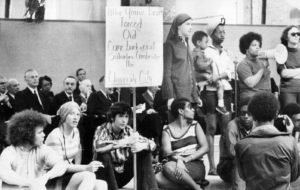Search Results
…in the early 1900s, they were also among the first to assimilate, quickly replacing the Irish at the heart of North Cambridge’s brick industry. The Immigration Acts of 1924—federal laws…
Read MoreHistory is so much more than just a list of events that happened. We dig deeper to uncover the knowledge that everyone in this city holds a piece of. By…
Read More…be installing new canopy brackets to replace the wrought iron brackets. A mason repointed the front foundation with a traditional lime-based mortar and took great care replacing the damaged bricks….
Read More…Georgian-revival style, the elegant brick “river houses” replaced coal and lumber yards on the riverfront without much resistance from the neighborhood. In the mid 1960s, Harvard pushed deeper into Riverside,…
Read More…But less than a hundred years ago the city was a major industrial center:- a manufacturing mecca of brick buildings and smokestacks. The Boston Daily Globe boasted in 1927, “Factories,…
Read More…agent for the Boston Bricklayers’ Union expressed their support for a six-day workweek of six hours per day, which “[h]e fully believes would also allow women to retain their present…
Read More…away in a beautiful, well-lit, old brick warehouse on a dead-end street in North Cambridge. When Jack Emerson started the company, in 1928, it was located at 15 Brattle Street,…
Read More…most careful attention to the child’s learning needs. The garage was demolished and a new, reinforced concrete building, two-story and basement high and clad in brick and glass was finished…
Read More…feet, and was only 20 feet deep. In the early 1860s the wings were cut off and the house — which actually has a brick wall down the middle, dividing…
Read MoreRead the full The Story of the Bee by Mary Towle Palmer (1924) as a PDF here Read the finding aid for The Bee Records, 1861–1934 here Cambridge Proceedings, Volume…
Read More



